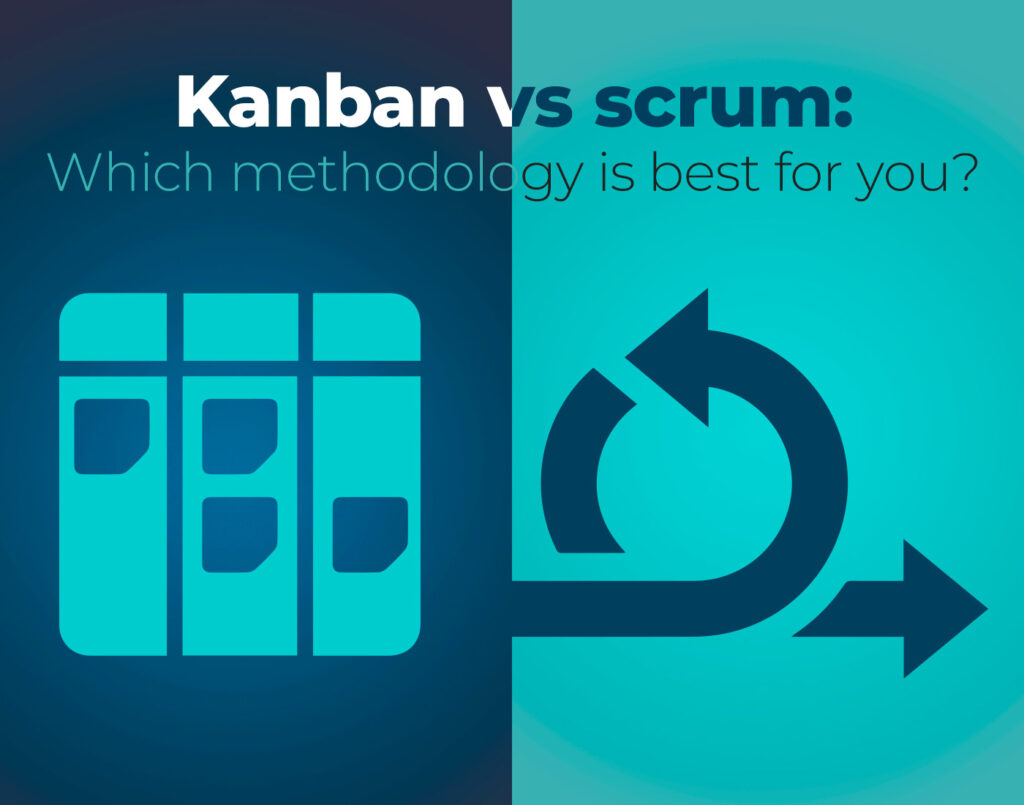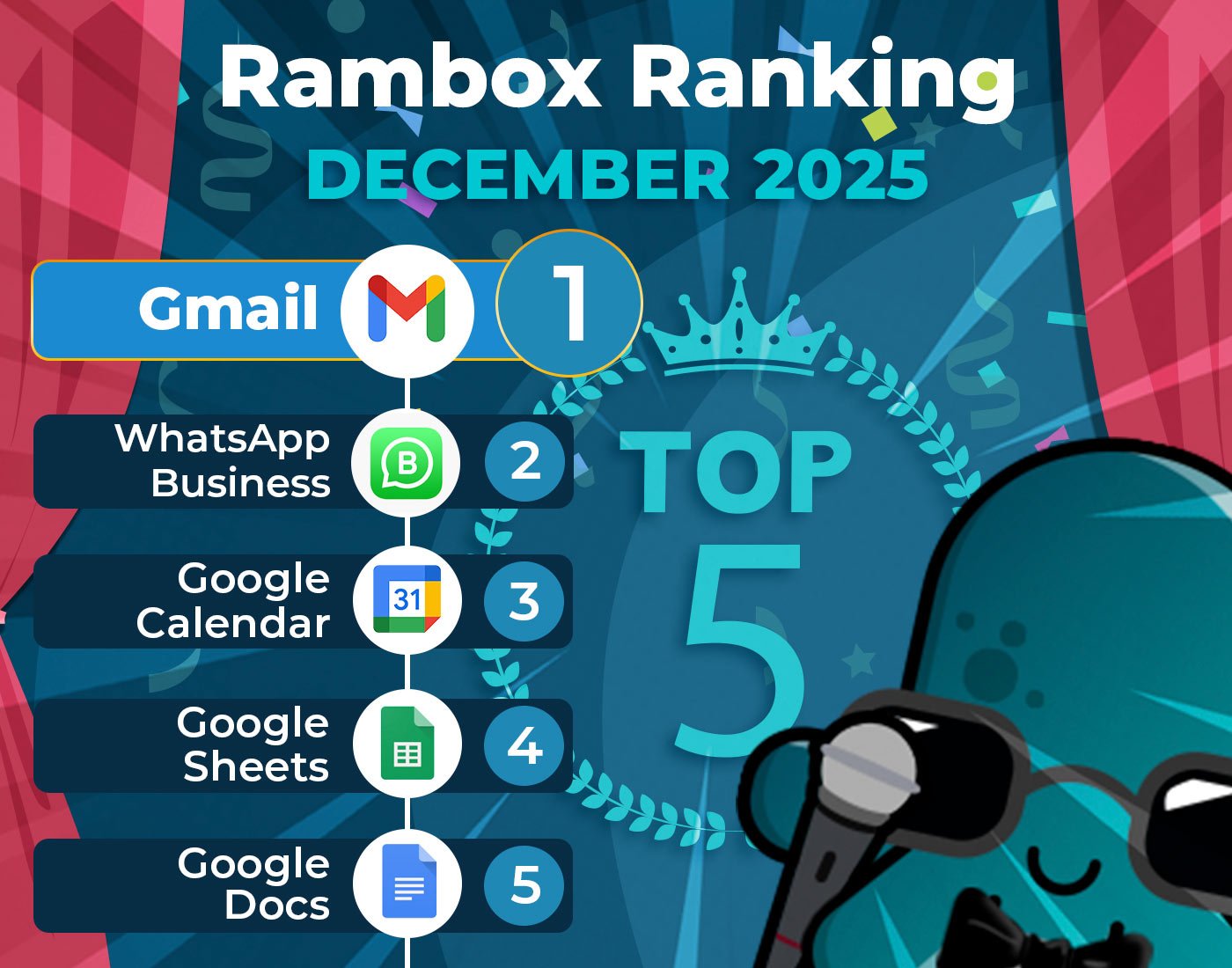Selecting the most suitable methodology is a crucial decision that can significantly impact your team’s efficiency and project outcomes. Two popular agile methods, Kanban and Scrum, have gained widespread recognition for their effectiveness in fostering collaboration and delivering high-quality results.
This post will explore the fundamental differences between Kanban and Scrum, examining their unique strengths and weaknesses. By the end, you will clearly understand which methodology is the best fit for your team and projects, empowering you to make informed and confident decisions in your agile journey.
Contents
What is Kanban?
Kanban is an agile project management methodology that originated from Lean manufacturing principles. It provides a visual and flexible approach to managing workflows, making it particularly well-suited for teams seeking continuous delivery and improvement. The core concept of Kanban revolves around visualizing work on a Kanban board, a visual representation of the workflow divided into columns. Each column represents a different stage of the process, and tasks move from left to right as they progress.
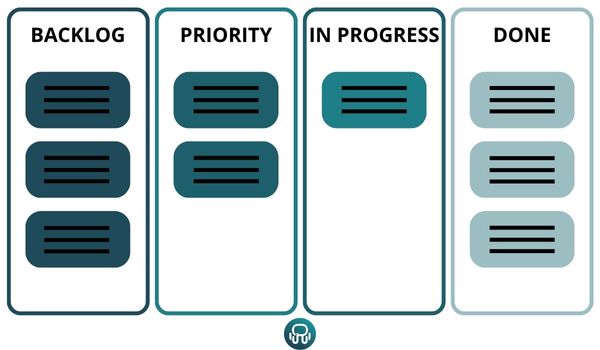
The simplicity and adaptability of Kanban make it an attractive choice for teams with varying project requirements and changing priorities. Unlike Scrum, Kanban does not prescribe specific time-bound iterations or fixed team roles, allowing teams to respond quickly to shifting demands.
Basic principles of the Kanban method
The Kanban methodology is guided by several fundamental principles that serve as its foundation. By embracing these principles, teams can optimize workflow, improve collaboration, and enhance productivity. Let’s explore the basic tenets of Kanban:
Visualizing the workflow
At the heart of Kanban is the visual representation of work on a Kanban board. This board consists of columns representing different workflow stages, and each column contains tasks or items as cards. By visualizing the flow of work, team members can quickly understand the status of each task and identify potential bottlenecks or areas for improvement.
Limiting work in progress (WIP)
To maintain a smooth and efficient workflow, Kanban advocates limiting the number of tasks in progress at any given time. By setting WIP limits for each column on the Kanban board, teams can prevent overloading team members and ensure that tasks are completed before new ones are initiated. This helps maintain focus and fosters a more consistent pace of work.
Managing flow
Kanban emphasizes the importance of managing workflow from start to finish. The goal is to achieve a steady and balanced flow of tasks through the workflow, avoiding delays and bottlenecks. By continuously monitoring flow and identifying potential blockages, teams can respond proactively and maintain a predictable delivery cycle.
Making process policies explicit
In Kanban, it is crucial to make process policies explicit and accessible to all team members. Process policies define the rules and guidelines for handling tasks at each workflow stage. By ensuring clarity and transparency in managing work, teams can reduce misunderstandings and make informed decisions about task priorities.
Continuous improvement
Kanban encourages a culture of continuous improvement. Teams are encouraged to review their workflow regularly, identify areas for enhancement, and continually implement changes to optimize their processes. This iterative approach to improvement fosters a learning mindset and enables teams to adapt to changing requirements effectively.
Empowering team members
In Kanban, team members are empowered to make decisions and take ownership of their work. Since Kanban does not prescribe rigid roles or hierarchies, each team member can contribute actively to the process and collaborate with others to achieve common goals.
What is Scrum?
Scrum is an agile project management framework that emerged in the early 1990s and has since become one of the most widely used methodologies in the software development industry. Rooted in transparency, inspection, and adaptation, Scrum provides a structured approach to managing projects while fostering collaboration and teamwork.
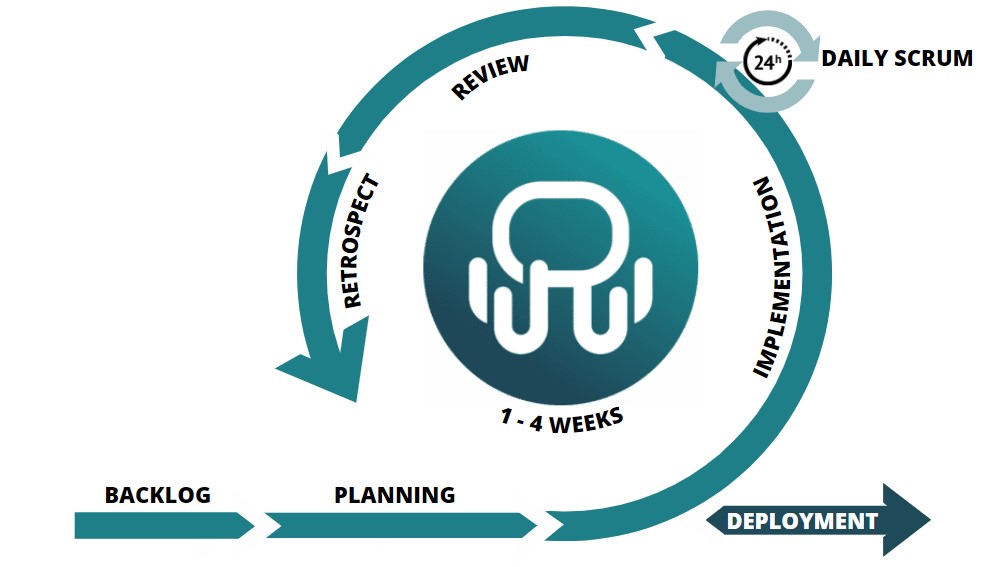
The Scrum framework
At the core of Scrum is a time-boxed and iterative framework that organizes work into “sprints.” A sprint is a fixed period, usually two to four weeks long, during which a cross-functional team collaborates to complete a predefined set of tasks. At the end of each sprint, a potentially shippable product increment is delivered, providing tangible value to stakeholders.
Let’s explore the critical components of the Scrum process:
- Product Backlog: the Product Owner is responsible for creating and maintaining a prioritized list of all the features, enhancements, and bug fixes required for the product. This list is known as the Product Backlog and serves as the single source of truth for the team’s work.
- Sprint Planning: at the beginning of each sprint, the team, along with the Product Owner, holds a Sprint Planning meeting. During this meeting, they collaborate to select items from the Product Backlog to work on during the sprint. The team defines the Sprint Goal, outlining what they aim to achieve by the end of the sprint.
- Daily Scrum: the team conducts a brief Daily Scrum meeting, usually 15 minutes, to synchronize their activities and discuss progress. Each team member provides updates on what they worked on the previous day, what they plan to work on next, and any blockers they are facing.
- Sprint Implementation: once the Sprint Planning is complete, the team begins the sprint by working on the selected backlog items. The team self-organizes to accomplish the Sprint Goal and delivers a potentially shippable product increment by the end of the sprint.
- Sprint Review: After the sprint, the team presents the completed work to stakeholders in the Sprint Review meeting. The Product Owner seeks feedback, and stakeholders can inspect the delivered increment and provide input for future iterations.
- Sprint Retrospective: following the Sprint Review, the team holds a Sprint Retrospective meeting to reflect on the sprint. They discuss what went well, what could be improved, and any action items for implementing changes to enhance their processes.
Kanban vs scrum: pros and cons
Regarding agile project management methodologies, Kanban and Scrum are two popular choices that offer unique benefits and trade-offs. Understanding the pros and cons of each method is crucial in determining which is best suited for your team and projects.
Let’s compare Kanban and Scrum side by side:
| Kanban | Scrum | |
| Flexibility | Highly flexible, allowing for continuous changes and adaptations. | Flexible within sprints, but changes are limited during an ongoing sprint. |
| Workflow Visualization | Visualizes work through a Kanban board for real-time progress. | Less explicit visualization; progress is evident through sprint completion. |
| Planning | No predefined iterations; work is pulled from the backlog. | Fixed-length iterations (sprints) with a commitment to a set of tasks. |
| Roles | No specific roles; empowers the entire team to manage the workflow. | Defined roles (Scrum Master, Product Owner, Development Team). |
| Delivery Frequency | Continuous delivery; work can be released at any time. | Incremental delivery; work is released at the end of each sprint. |
| Focus on Priorities | Emphasizes flow efficiency and work item priorities. | Priorities set for each sprint, promoting focused development efforts. |
| Predictability | Less predictable due to constant changes and variable cycle time. | More predictable with fixed-length sprints and established velocity. |
Kanban vs scrum: which one is best for you?
As you’ve now become acquainted with the key features and characteristics of both Kanban and Scrum, the question remains: which methodology is the best fit for your team and projects? Choosing between Kanban and Scrum hinges on several factors, including the nature of your projects, team dynamics, and organizational requirements. Let’s guide you through the decision-making process by considering various scenarios:
Choose Kanban if:
- Unpredictable Workload: If your team deals with constantly changing priorities and ad-hoc tasks, Kanban’s flexible nature allows you to handle such variability effectively.
- Continuous Delivery: If your projects demand a constant flow of deliverables rather than fixed iterations, Kanban’s focus on continuous delivery makes it an ideal choice.
- Limited Roles and Ceremonies: Kanban’s simplicity offers a lightweight approach without rigid processes if your team prefers fewer prescribed roles and ceremonies.
- Maintenance Projects: For ongoing maintenance tasks or support-related work, Kanban excels in managing and prioritizing these activities.
Choose Scrum if:
- Predictable Iterations: Scrum’s time-boxed sprints provide a predictable and cadenced approach if your projects benefit from fixed-length iterations with well-defined goals.
- Clear Prioritization: If you need to set specific priorities for each sprint, Scrum’s backlog refinement and sprint planning facilitate focused development efforts.
- Defined Roles and Ceremonies: If your team prefers explicit roles and structured ceremonies, Scrum’s defined roles (Scrum Master, Product Owner, and Development Team) and ceremonies offer a well-organized framework.
- Well-Defined Projects: Scrum’s emphasis on Sprint Reviews and Retrospectives allows for continuous improvement and product refinement for projects with clearly defined objectives and stable requirements.
Top Apps for Kanban and Scrum
Several project management apps cater to Kanban and Scrum methodologies, offering features that enable seamless adoption of either approach or a combination of both. Here are the key features of some popular apps that support both Kanban and Scrum:
- ClickUp is a versatile project management tool that accommodates Kanban and Scrum workflows. With ClickUp, you can create customizable boards for Kanban-style task management. Additionally, ClickUp offers Sprint Lists, Sprint Goals, and Sprint Points, making it easy to implement Scrum iterations. Teams can switch between views effortlessly, allowing for a fluid transition between the two methodologies.
- Monday provides a flexible platform that caters to both Kanban and Scrum methodologies. Teams can create Kanban boards for visualizing workflow and managing tasks in real time. For Scrum, Monday.com offers Sprint Planning boards, backlog prioritization, and sprint tracking. Users can customize their workflow to match the specific requirements of each method. If you’re deciding between Monday and other project management tools, check out our comparison of Asana vs Monday.
- Trello is known for its simplicity and visual appeal, making it an excellent choice for Kanban and Scrum enthusiasts. Teams can create Kanban boards with customizable columns to represent different workflow stages. Moreover, using various Power-Ups and integrations, Trello can support Scrum iterations and facilitate more advanced project management.
- Asana, allows it to cater to Kanban and Scrum workflows. Teams can create Kanban boards for visualizing and organizing tasks effectively. For Scrum, Asana provides features like backlog refinement, sprint planning, and the ability to set priorities within sprints. Not sure if Asana is the best fit for your workflow? Check out our comparison of Asana vs Notion.
- Notion‘s adaptable workspace makes it suitable for both Kanban and Scrum methodologies. Teams can design boards and databases to match the flow of their preferred method. The platform’s versatility enables users to customize their project management approach according to their team’s needs. If you’re not sure whether Notion is the right tool for your productivity needs, take a look at our comparison of Notion vs Todoist.
These apps offer intuitive interfaces, collaboration tools, and the ability to manage tasks efficiently, making them ideal choices for teams looking to implement agile methodologies. Whether you’re inclined towards Kanban’s continuous flow or Scrum’s iterative approach, these apps provide the necessary features to streamline your agile workflow and boost productivity.
How can Rambox help you to implement these two methodologies?
Rambox is a workspace organizer that allows you to unify all the applications you want in one place, becoming one of the best apps for project management. It is perfect for those who care about productivity while working with many business and personal applications. With Rambox, you can easily access your messaging apps, email accounts, project management tools, and more from a single interface.
With Rambox, you can have at your fingertips any of the applications you prefer to implement both Kanban and Scrum methodologies. Adding applications to your main tabl or to your workspaces is very simple, just follow the steps below:
- Go to the workspace where you want to add the app. Click on “+ Add an app or workspace.”
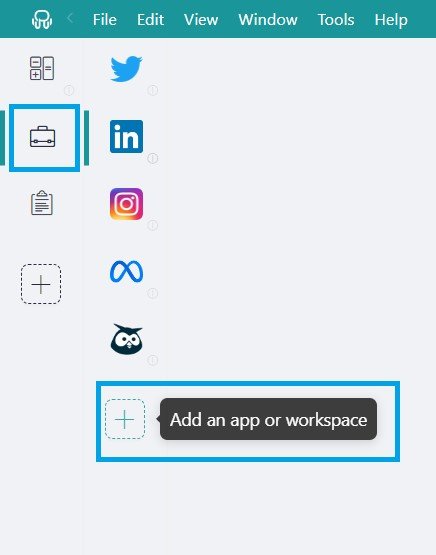
- Type the name of the app you want to add in the search panel at the left and, in the apps filter, select “All apps”. If the app you are looking for does not appear in the list, you can always add it as a “Custom App” utilizing its URL.

- Configure the application settings to your liking. Remember that you can choose which profile you want to use in the app (inherit from the workspace, primary, private, or a custom profile).
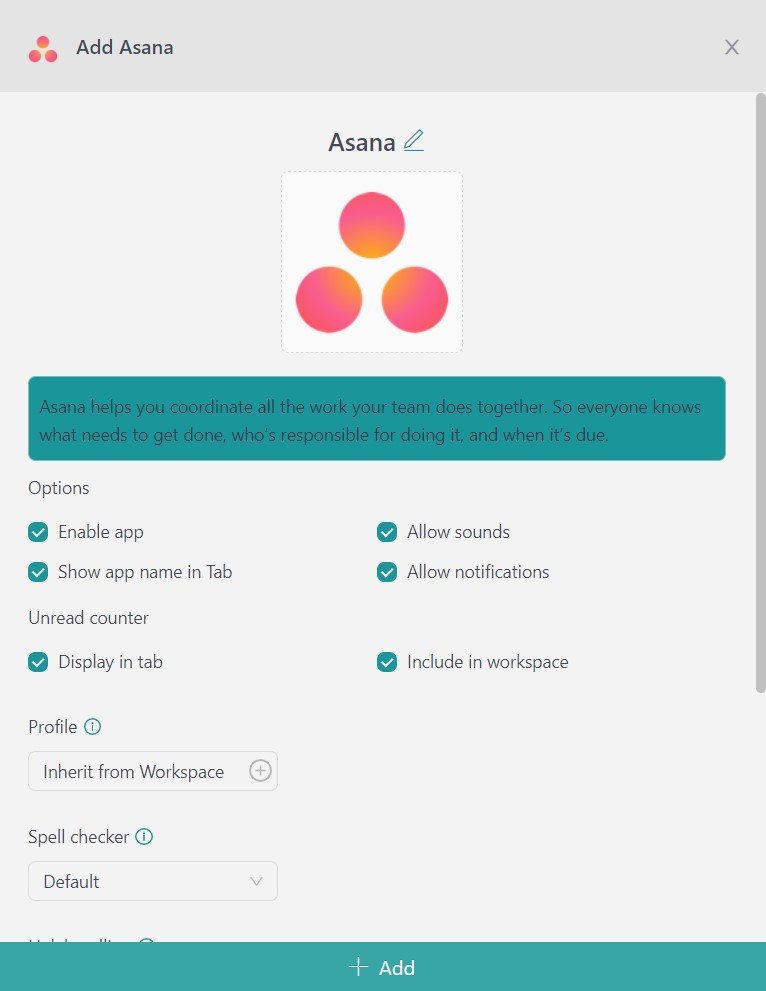
That’s it! The app has been added to your Rambox’s workspace!
If you are overwhelmed by the number of applications you have to work with, try Rambox for free. All you have to do is download the program, configure it to your liking, and enjoy its functionalities. No cards, no cheating, it’s that simple!
